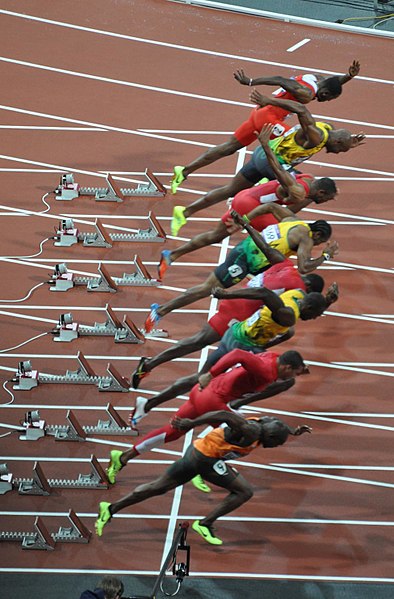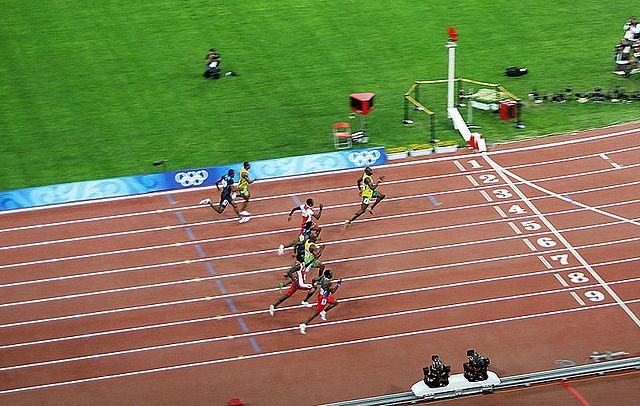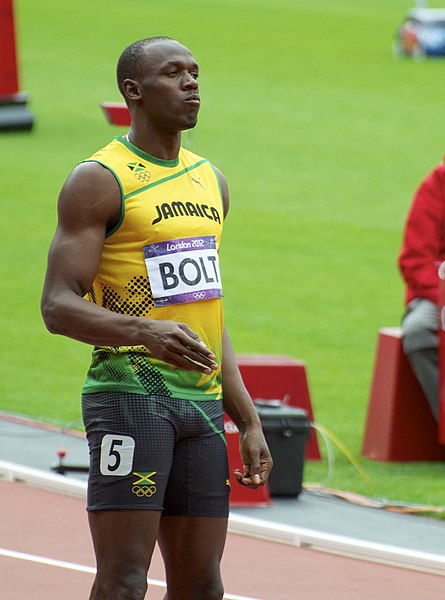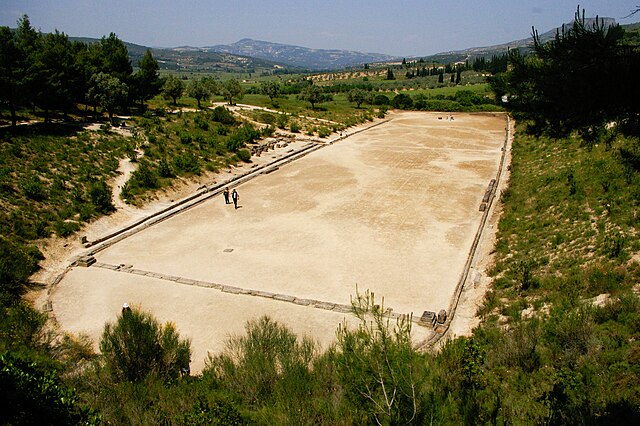The 100 metres, or 100-meter dash, is a sprint race in track and field competitions. The shortest common outdoor running distance, the 100-meter (109.36 yd) dash is one of the most popular and prestigious events in the sport of athletics. It has been contested at the Summer Olympics since 1896 for men and since 1928 for women. The inaugural World Championships were in 1983.
Start of the men's 100 metres final at the 2012 Olympic Games in London
Start (green) and end (red) points of a 100 metre race, marked on a running track
Male sprinters await the starter's instructions
Usain Bolt breaking the world and Olympic records at the 2008 Beijing Olympics
Sprinting is running over a short distance at the top-most speed of the body in a limited period of time. It is used in many sports that incorporate running, typically as a way of quickly reaching a target or goal, or avoiding or catching an opponent. Human physiology dictates that a runner's near-top speed cannot be maintained for more than 30–35 seconds due to the depletion of phosphocreatine stores in muscles, and perhaps secondarily to excessive metabolic acidosis as a result of anaerobic glycolysis.
Usain Bolt, world record holder in 100 m and 200 m sprints
This sprinter's initial crouch in the blocks allowed her to preload her muscles and channel the force generated from this into her first strides.
The stadion of ancient Nemea, Greece.
Start of the women's 60 m at the 2010 World Indoor Championships








